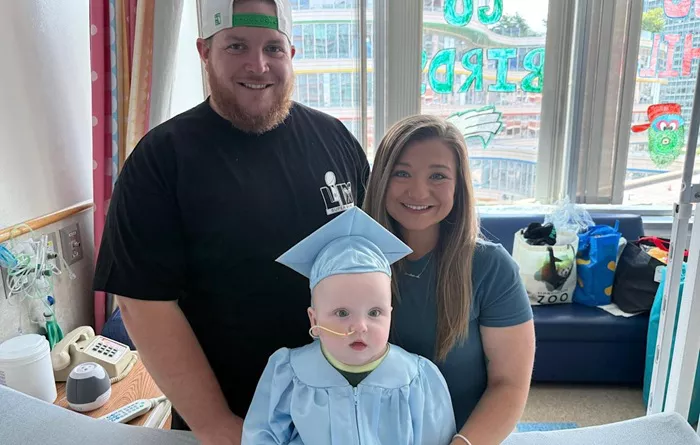Philadelphia — A 10-month-old baby named KJ Muldoon, who made national headlines as the first patient to receive a custom gene-editing treatment for a rare genetic disease, was released from Children’s Hospital of Philadelphia this week after spending 307 days in care.
Diagnosed shortly after birth with carbamoyl-phosphate synthetase 1 deficiency — a life-threatening metabolic disorder that affects just 1 in 1.3 million people — KJ faced long odds. The condition causes a dangerous buildup of ammonia in the body and is fatal for half of affected infants in early life.
But KJ’s doctors acted quickly. Using the gene-editing tool CRISPR, they developed a personalized therapy tailored to correct the specific genetic defect affecting him. The treatment was administered when KJ was seven months old, and his condition rapidly improved. His body stabilized, and he began gaining weight at a healthy rate for his age.
“This was the most severe variant of the disease,” said Dr. Ahrens-Nicklas, one of KJ’s physicians. “We had to fast-track the development of a custom therapy we had already begun working on.”
Gene therapies using CRISPR have been approved for other genetic diseases, including sickle cell disease and beta thalassemia. But KJ’s case was so rare that pharmaceutical companies had no existing treatment. Instead, his medical team created the therapy in-house using their own research and lab technology.
“CRISPR gave us a tool to target the exact gene we needed,” said Dr. Kiran Musunuru, director of the Penn Cardiovascular Institute’s Genetic and Epigenetic Origins of Disease Program. “It’s like entering a GPS coordinate—you can direct it precisely to fix the faulty gene.”
On Tuesday, staff at the hospital lined the halls to cheer KJ out in a celebratory “clap out” ceremony. Wearing a tiny cap and gown, KJ was sent home with his parents and siblings, escorted by local law enforcement.
Doctors caution that more work is needed to make custom gene-editing therapies more accessible. Still, KJ’s case marks a hopeful milestone for future treatment of rare genetic conditions.
“We’re optimistic that this is just the beginning,” Musunuru said.
Related topics:


